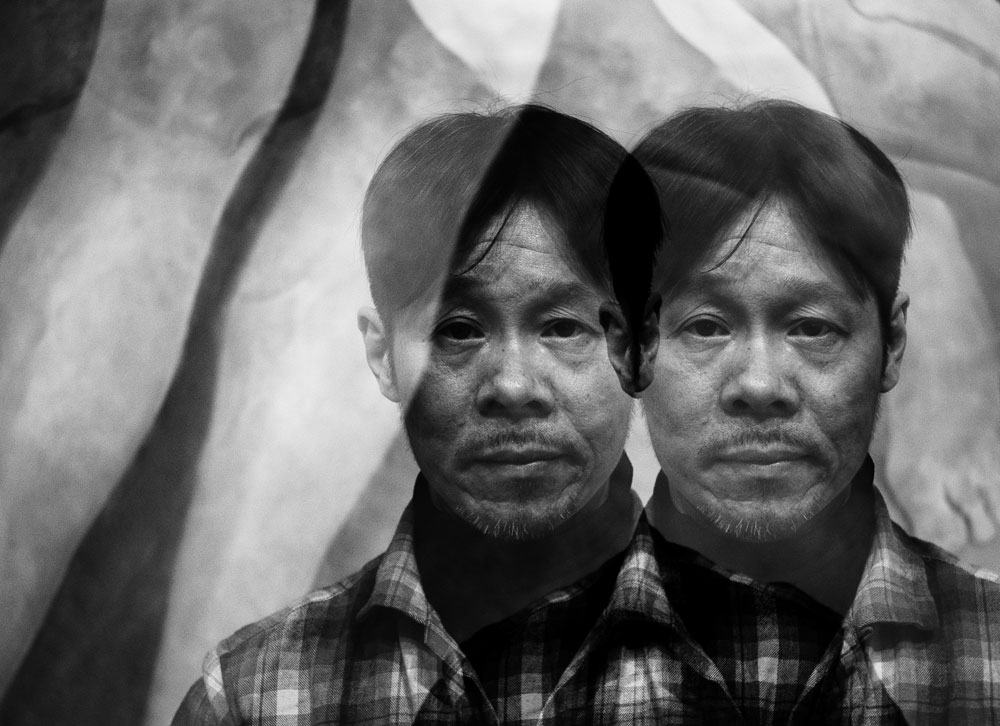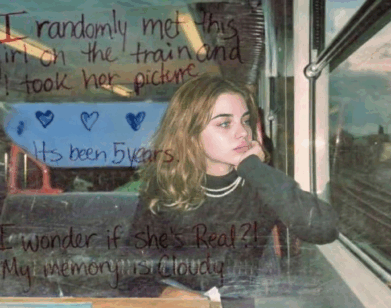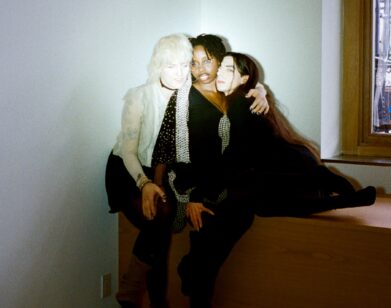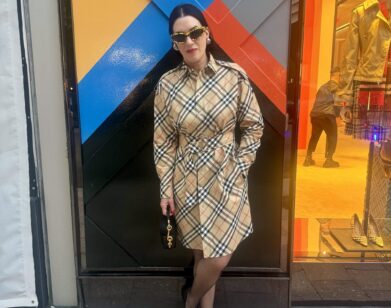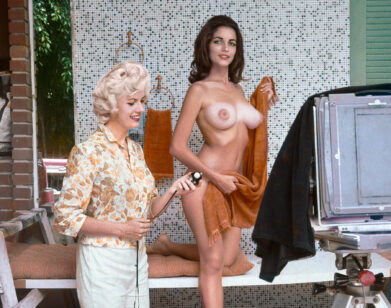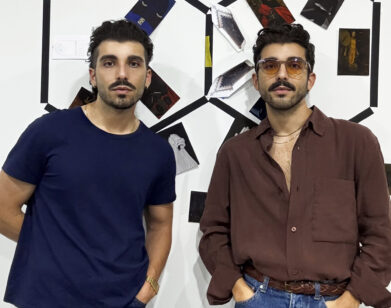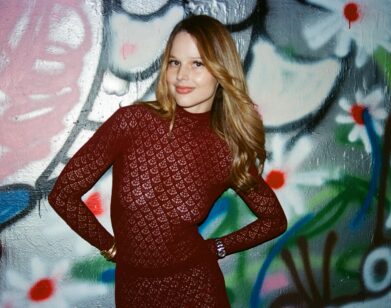Lost in Time
MAO YAN IN NEW YORK, MARCH 2015. PORTRAIT BY VICENTE MUÑOZ.
Drawing references from classical master such as Rembrandt, Delacroix, and Goya, contemporary Chinese artist Mao Yan creates timeless portraits. Although he paints figures living in the 21st century, his subjects often appear nude and in blank studio spaces, void of any cultural or societal signifiers. The topic is simply the human body, no matter if it comes from a small, intimate close-up of Thomas Rohdewald’s face or an overwhelming, 10-foot-tall nude woman staring back at the viewer. Last week, Mao Yan, who is one of the most well known artists in China, made his United States debut with the opening of a solo show at Pace in Chelsea.
While the artist might come from a decidedly Chinese heritage, his goal is to escape the repeated, and often contrived, label of “Chinese painter.” He received a classical oil painting education at the Central Academy of Fine Arts in Beijing, but soon after graduation, he disposed of many stereotypical Chinese tropes, including the use of color and portrayal of landscapes. Mao Yan now uses the limitations of working only with gray scale and depicting the human figure to expose nuances within his canvases, which range from a claustrophobic 10 x 14 inches, to an expansive 10 feet x six feet. Following the opening of the self-titled exhibition, we met the artist at Pace and spoke about his practice.
EMILY MCDERMOTT: I want to start with a general question. What drew you to portraiture when you first started painting?
MAO YAN: When I was in the academy training, we had a lot of portraiture assignments, but classical Chinese paintings focus on landscape rather than figures. So I thought, very simply, that I wanted to make some contributions to figure painting, to portraiture.
MCDERMOTT: Was there any specific image or artist that inspired you to delve into portraiture?
MAO YAN: There were a lot. [laughs] I started studying painting when I was very young. My father is an amateur, weekend painter, and when I was a child, a lot of the artworks that I saw during that era were inspired by Soviet-era art culture. Someone I found very mesmerizing was Eugene Delacroix. I saw [one of his] self-portraits. I thought it was a very dignified portrait of an artist as an individual. Up to today, Delacroix is one of my favorite classical painters.
MCDERMOTT: You’ve done self-portraits, too. Do you prefer those or painting other people?
MAO YAN: Other people. [laughs] You know, in the beginning of my career, it wasn’t always easy to find models, so I painted self-portraits out of convenience. Also, young artists tend to be more self-absorbed. As I got older, I realized that wasn’t the best approach. [laughs]
MCDERMOTT: I know Thomas has been the subject of at least 100 of your paintings. How did you first meet each other?
MAO YAN: Very serendipitously in Nanjing in the late ’90s. Thomas was studying Chinese. It was pure chance, really. We had friends in common, but [after meeting] we quickly became very close friends ourselves. I had been painting all of my friends, and one of them was Thomas. I very easily painted three or four of him at once, and each granted me different sensations, so I just kept going. After a couple paintings, it was obvious that it was special to paint Thomas. It was like painting many different personalities, and as he became more second nature to me as a model, I was able to discover more on the canvas.
MCDERMOTT: What about Thomas keeps you going back to him as subject matter?
MAO YAN: There are of course many interesting, wonderful qualities about Thomas, but that’s not the main reason why I keep going back. During that time in the ’90s, many Chinese artists were ardently searching for symbols, concepts, and gestures to announce themselves as “Chinese artists.” That was their primary preoccupation, but that was not the case for me. I’m not concerned with that. I deliberately chose a figure who was not clearly linked to the mainstream Chinese art scene. This allowed me to fully focus on the pure language of art and painting for myself. I made lots of very small paintings during those years, but small paintings are very time consuming and laboriously done. This was a learning process for me. I kept learning and sensing more and more about the subject matter, the act of painting, life…also just learning how to spend a lot of time in solitude, spend a lot of time on one project, really becoming absorbed in the details.
MCDERMOTT: When you start a painting, how do you decide if it is going to be large or small? Does it depend on subject matter?
MAO YAN: I’m very decisive about it. I have very set canvas sizes that I work with and they all have certain ratios. It has some relation to the subject matter. For example, the nude paintings of women are all this size [10′ 9 15/16″ x 6′ 6-3/4″]. The proportions are very measured. The small and medium canvases in the show are standard sizes for me.
MCDERMOTT: Why do you choose to make the nude portraits large?
MAO YAN: It’s a must. A lot of people make big paintings, but many large paintings are collages with smaller elements. Portraits this size of nude women is very rare, but I’m not trying to makeup for the lack of large nude paintings; I just feel like this size is necessary for what I want to convey. I’m going to paint 15 or 20 of them. I hope that when I complete the suite of 15 or 20 nude female portraits, they can be exhibited together.
MCDERMOTT: Moving to the color scheme, I’m curious as to why you only work with cool tones—the greys and blues.
MAO YAN: I like grey and the cool colors. My newer works feel heavier than my earlier works; I want the overall feel to be weighted, to convey more gravity. It has to do with my understanding and feelings, not just for art, but for life.
MCDERMOTT: You want them to convey an overall darker tone now, but what originally drew you to this palette? While you were in school, were you always working with grey?
MAO YAN: My student work was actually quite vibrant, very colorful, but I eventually began to eliminate color. I have said before that the color grey itself is the subject matter of my work, and my attitude towards life. The range of tones within the spectrum we recognize as grey is quite narrow, and I enjoy discovering nuances within that range. Incorporating color allows for more possibilities, but I enjoy the restriction.
MCDERMOTT: So would you say that grey is just as important as the actual subjects of your work?
MAO YAN: Grey is very important. I will only sculpt the figures within the range of grey. It is my compositional compass. I basically reduce saturations and colors in life to the lowest degree possible.
MCDERMOTT: Going back to childhood, your dad is a weekend painter, so did you grow up going to museums? Who else influenced you aside from Delacroix?
MAO YAN: The China I grew up in was very different from the China nowadays. There were some museums, but the curation was very politically driven, and the exhibitions were very thematically repetitive. However, my father did take me to many, many exhibitions regardless, and managed to point out the gems in those shows.
MCDERMOTT: Do you think that repetition has influenced your work now and some of the repetition of subject matter?
MAO YAN: No, no. Nothing to do with it at all. [laughs] I don’t intend to portray contemporary society in my work. My models are often nude, because I don’t want to include cultural or time signifiers—fashion is so transient, conspicuous, and telling. For these nude figures, they’re nude because I don’t want to evoke any immediate social references or narratives to distract the viewer to reference the world outside the canvas. I want my paintings to convey temporality within the realm of painting itself, an intimate, aesthetic sense of the passage of time and progress of life, governed purely by the paint and the canvas, not propelled by the progress of society at large.
MCDERMOTT: Do you think your paintings are perceived differently in New York than in China?
MAO YAN: There are some differences, but I don’t really think about that. I don’t notice differences in the audience’s reactions. The cultural backgrounds are obviously different, but I don’t think my works are that complicated. They’re really quite simple, just very pure painting; they have a relationship with more classical works. Going with that thread, the works are very easy to understand and to relate to.
“MAO YAN” IS ON VIEW AT PACE, NEW YORK THROUGH APRIL 4.

